Organic Nutrition & Agriculture
Studies show that children who are hungry and undernourished have trouble focusing and remembering what they learn. A good nutritious meal promotes better learning. Optimal nutrition allows for better memory and cconcentration, better overall health and physique, improved behavior and attitude, better academic performance, and creates better nutritional habits early on, for life-long success.

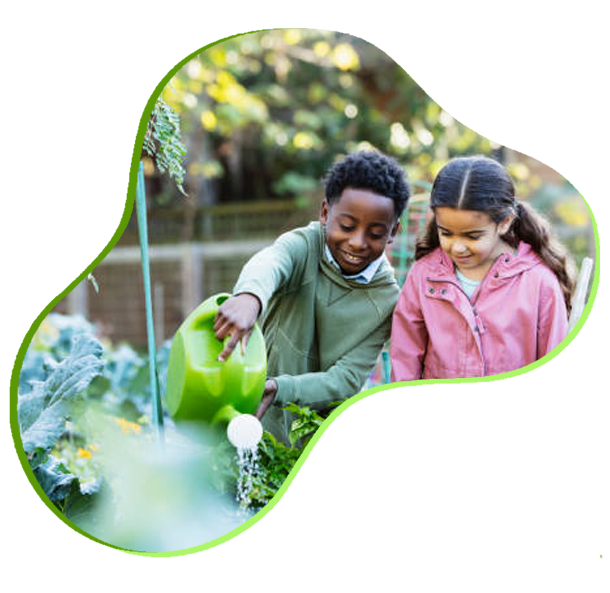
We aim to create an Agro-Oasis as part of our Model schools. A self-sustaining agricultural food supply will be developed to support the school’s need for food. Using permaculture, hydroponics, aquaponics, mushroom cultivation and syntropic farming, while looking to develop food forests.
Using the methods learned, the students will be able to help their families and communities grow their own food to become more self-sustaining and healthy using agriculture. A small animal farm can also be maintained, depending on region and desire, to provide fresh eggs and milk to support the meals. Composting of vegetable and animal waste can assist with providing natural fertilizer for the agro-oasis.
Permaculture
What is permaculture farming? Permaculture gives farmers a way to achieve high yields and productivity while doing it in a more sustainable and environmentally-friendly way than conventional farming methods. It applies a more holistic approach to farming crops or livestock. Permaculture encompasses a wide range of topics. It deals with ethics, morals, and other factors that influence the development of a more sustainable society. Permaculture has 3 core tenants:
- Care for the earth. In other words, help all life systems continue to exist and multiply. Because if we don’t have a healthy planet, humans can’t exist at all.
- Care for the people. Allow people to access resources they need to survive.
- Fair share. You should only take what you need, and reinvest any surplus. Any extra can go forward to helping fulfill the two other core tenants. This includes returning waste products back into the system so it can be made useful again. The term originated from David Holmgren in 1978, but the practices of permaculture date back much further.
David Holmgren’s original ideas regarding permaculture can be broken down into Twelve Design Principles:
1
Observe and Interact – Take time to observe nature before making any decisions or changes. Often just by observing, we can get a lot of insight into how to design our farm or garden to suit what’s already there.
2
Catch and Store Energy – In nature, resources tend to come in peak periods. We get a lot of sunlight in the summer, but much less in the winter. In some places there are rainy seasons some of the time, and droughts other parts of the time. Permaculture is big on capturing resources like rainwater or solar electricity so they can be used later as needed.
3
Obtain a Yield – Make sure you’re being rewarded for the work that you’re putting in. After all, you probably aren’t farming just for a hobby. You want to get food, an income, or something else in return. You can’t work on an empty stomach.
4
Apply Self-regulation and Accept Feedback – Hold yourself accountable, and also be open to suggestions and critiques from others. If there is something you’re doing that’s inappropriate for your situation, you want to know about it, so your systems can function well.
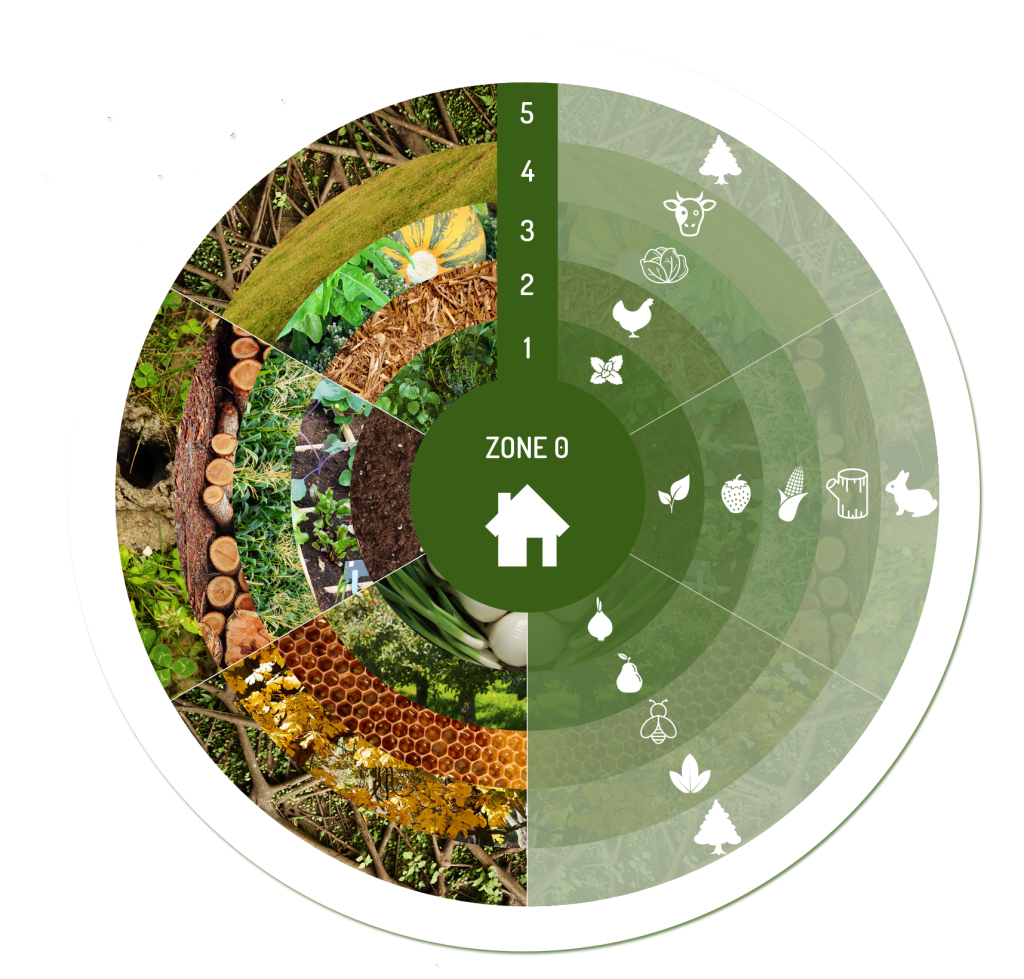
5
Use and Value Renewable Resources and Services – Nature has an abundance of renewable resources that we can make use of. We should prioritize those, and try to reduce the consumption of non-renewable resources.
6
Produce No Waste – Being “zero waste” is a big trend right now, but really it all started with permaculture. If we value all of the resources that we have available and use a bit of ingenuity, we can make sure that nothing goes to waste.
7
Design From Patterns to Details – Take a look at nature and society. You can usually observe patterns in things like how beehives are organized, the design on a snail shell, or other things to give inspiration for your designs.
8
Integrate Rather Than Segregate – Permaculture is all about having things support each other and work together, instead of having everything exist as an island unto itself. By pairing different plants, livestock, and other objects together correctly, we can take advantage of relationships they can have with each other.
9
Use Small and Slow Solutions – Permaculture isn’t about making big changes overnight. Making gradual changes and working with slow systems makes them much easier to maintain. Plus they tend to have a more sustainable outcome. When it comes to permaculture, slow and steady wins the race.
10
Use and Value Diversity – Where conventional farming is all about monoculture and many farmers traditionally only grow one or two crops, permaculture is big on diversity. A diverse system is much less vulnerable to threats like pests, diseases, and other problems than a homogeneous one. Don’t put your eggs all in one basket.
11
Use Edges and Value The Marginal – Where two different things meet is usually where the most interesting stuff happens. It’s usually the most productive and diverse part of the whole system.
12
Creatively Use and Respond to Change – Change is inevitable. By making careful observations and then stepping in at the right time, we can make a positive outcome based on changes instead of negative ones. https://grocycle.com/permaculture-farming/

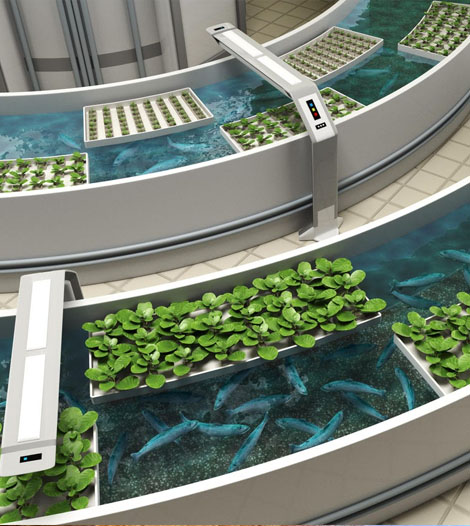
Aquaponics
What is aquaponics? Aquaponics is a combination of aquaculture (fish farming) and hydroponics (growing plants in a nutrient solution), yielding two types food; fish and vegetables. In aquaponics, the plants are grown in the grow bed, and fish are placed in the fish tank. The water from the fish tank that contains fish waste is fed to the grow bed, where billions of naturally occurring beneficial bacteria break the ammonia down into nitrites and then nitrates. Plants absorb these nitrates and other nutrients to help them grow. In return, plants clean and filter the water in the system. The fresh, clean, and oxygenated water then recirculates back to the fish tank, where the cycle will begin again.
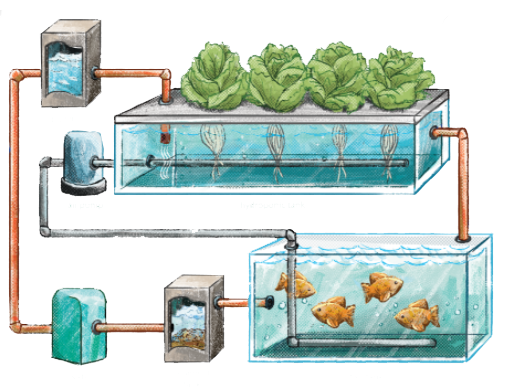
Hydroponics
What is hydroponics? Hydroponics is the cultivation of plants without using soil. Hydroponic flowers, herbs, and vegetables are planted in inert growing media and supplied with nutrient-rich solutions, oxygen, and water. This system fosters rapid growth, strong yields, and superior quality. When a plant is grown in soil, its roots are perpetually searching for the necessary nutrition to support the plant. If a plant’s root system is exposed directly to water and nutrition, the plant does not have to exert any energy in sustaining itself. The energy the roots would have expended acquiring food and water can be redirected into the plant’s maturation. As a result, leaf growth flourishes as does the blooming of fruits, flowers and food.
Syntropic Farming
Syntropic Farming deals with the hands-on creation of an Agroforestry system that mimics nature to produce food while restoring depleted soils and ecosystems. Natural processes are translated into farming interventions in their form, function, and dynamics. Thus we can talk about regeneration by use, since the establishment of highly productive agricultural areas, which tend to be independent of inputs and irrigation, results in the provision of ecosystem services, with special emphasis on soil formation, regulation of microclimate and the favoring of water cycles.
That way, agriculture is synced with the regeneration of ecosystems.
Instead of recipes, there is a set of concepts and techniques that enable the understanding of Syntropic Agriculture’s fundamental characteristics. Its creator, Ernst Götsch, bases his worldview on a transdisciplinary scientific approach and a practical daily routine for more than five decades. Syntropic Farming has proven to work, and it can address the biggest social and environmental challenges of our time. In Syntropic Farming, holes become nests, seeds become genes, weeding becomes harvesting, the competition gives way to cooperation and pests and diseases are seen as the “agents from the department of optimization of life processes”.
These and other terms do not arise by chance, but rather derive from a change in the way we see, interpret and relate to nature.
Syntropic Agriculture helps the farmer replicate and accelerate the natural processes of ecological succession and stratification, giving each plant the ideal conditions for its development, placing each one in their “just right” position in space (strata) and in time (succession).
Farmers who work in Syntropic Agriculture, refer to any species mentioning at least these four categories – the fundamental criteria that must be observed in the orchestration of syntropic crops. Space (stratification) has to be harmonized over time (life cycle), respecting the successional steps (Placenta, Secondary and Climax) within each of the Systems (Colonization, Accumulation and Abundance), according to Ernst’s definitions. A syntropic agroforestry, therefore, evolves and transforms over time and space, always “towards the increase of quantity and quality of consolidated life”, says Ernst.
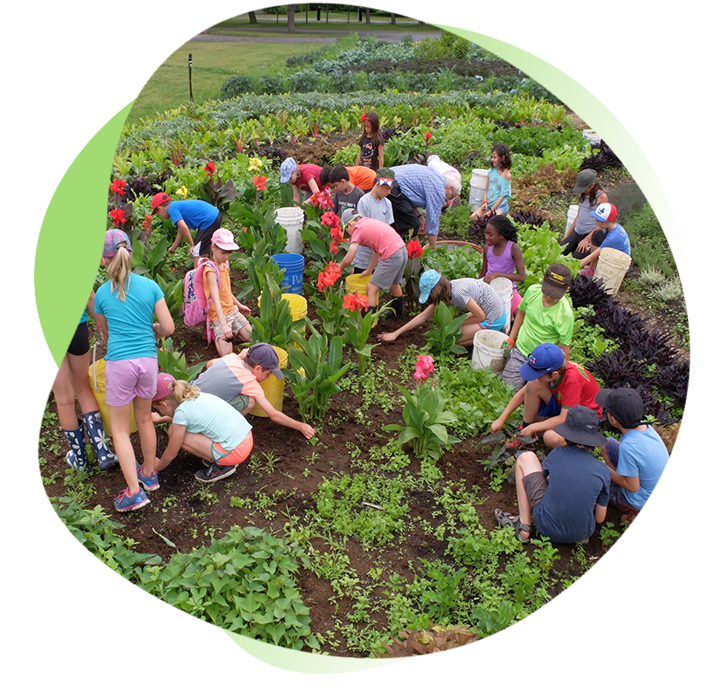
It is process-based agriculture, rather than input-based. In that way, the harvest is seen as a side effect of ecosystem regeneration, or vice versa.
Bringing the concept of syntropy into agriculture, Ernst Götsch introduces an unprecedented perspective associated with this practice. He understands that, in the context of the ecosystem, there are not only dissociative but also complexifying processes. The collective metabolism of organisms reorganizes entropic residues into more complex compounds. This would be the mechanism by which life thrives, always generating, according to Götsch, a positive energy balance both in the subsite of the interaction and on the planet as a whole. So when we say that we want to work for nature and not against it, that is what we are talking about. Having syntropy as a fundamental matrix for the interpretation and management of cultivated landscapes is what supports the regenerative capacity of syntropic agriculture.



